The Perfect Lofoten Itinerary for One Week
6 min readIt was last May when I found myself standing in the shadow of jagged mountains, staring out at the impossibly blue waters of the Lofoten Islands.
Norway, especially Lofoten, feels like the edge of the world in the best possible way. If you’re anything like me, you’ll want to do more than just see it; you’ll want to breathe it in, hike it, and dive deep into its wild beauty.
So buckle up, rent a car, and let’s take a week-long road trip through some of the best stops on these magical islands.
Day 1-3: Leknes – Gateway to Adventure
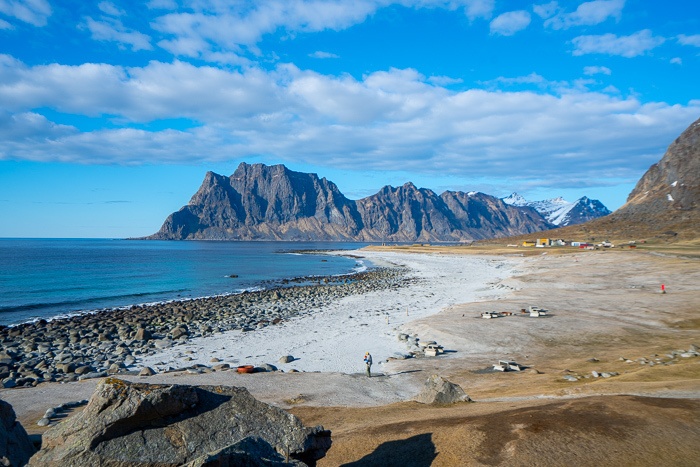
Fly into Leknes and start your journey by picking up a rental car—trust me, you’ll need it. Lofoten’s beauty is scattered across its islands, and the best way to explore is by car.
There are several grocery stores in Leknes, some of which are partially open on Sundays for essentials. While I wouldn’t stay there, it’s a great place to stay near.
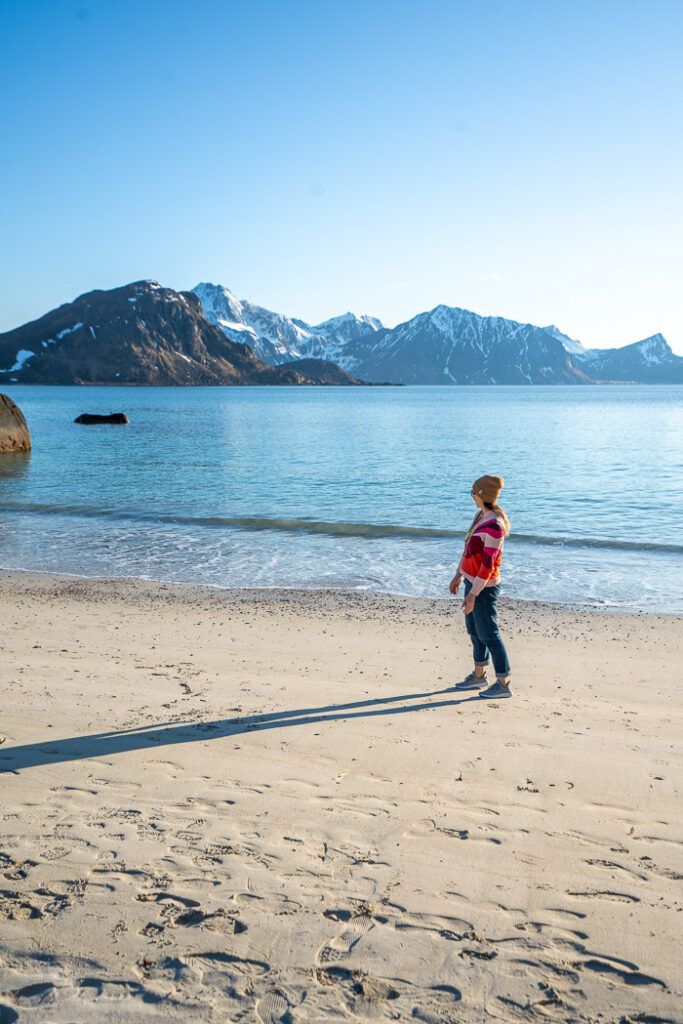
First stop, Uttakleiv Beach. It’s famous for a reason: the massive boulders, crystal-clear water, and the way the light hits it in the evening—it’s stunning. But let me tell you a secret: Hauklandstranda Beach just around the bend? It’s just as breathtaking but without the entrance fee, and fewer crowds. If you want to spend a couple of hours on a picnic with gorgeous views, this or Vik beach next door are gorgeous, too.
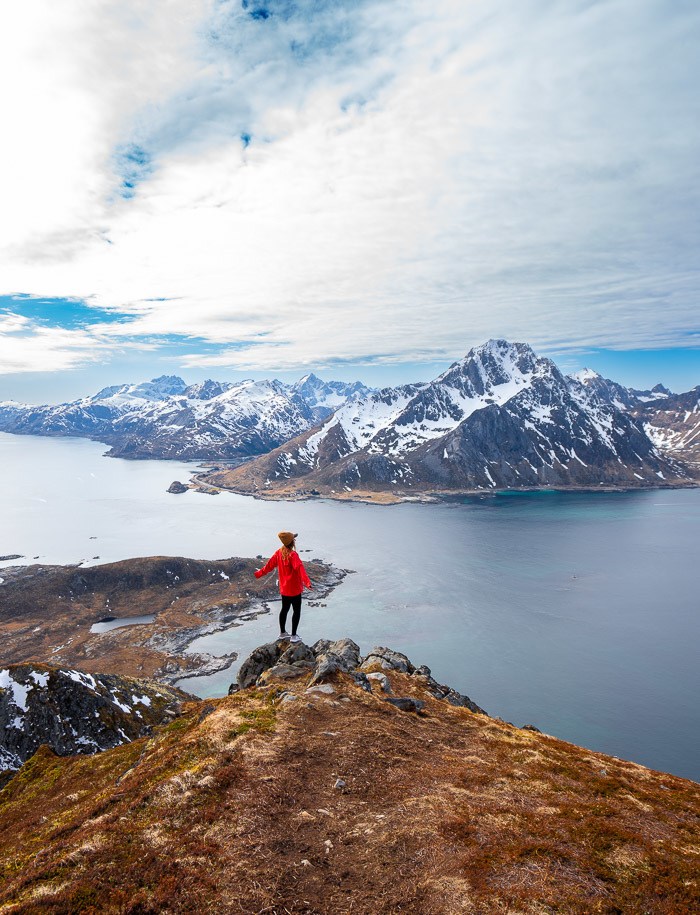
For a hike that’ll make you feel alive (and slightly breathless), try the Offersøykammen hike. It’s a 2-3 hour roundtrip, with an easy-ish climb that rewards you with panoramic views of the islands. The wind up there will make you feel like you’re on top of the world.
This is one of the less intense hikes in Lofoten, is full of sharp, dramatic mountains. Many hikes there are challenging despite usually being on the shorter side, so we appreciated this one a lot considering we had a baby on Garrett’s back.
Reminiscent of Patagonia, Alaska, and Iceland hiking, Lofoten’s weather can change on a dime and it’s important to anticipate weather shifts during your hike. Here are some of my best tips for hiking in the rain, and the ultimate Norway packing list.
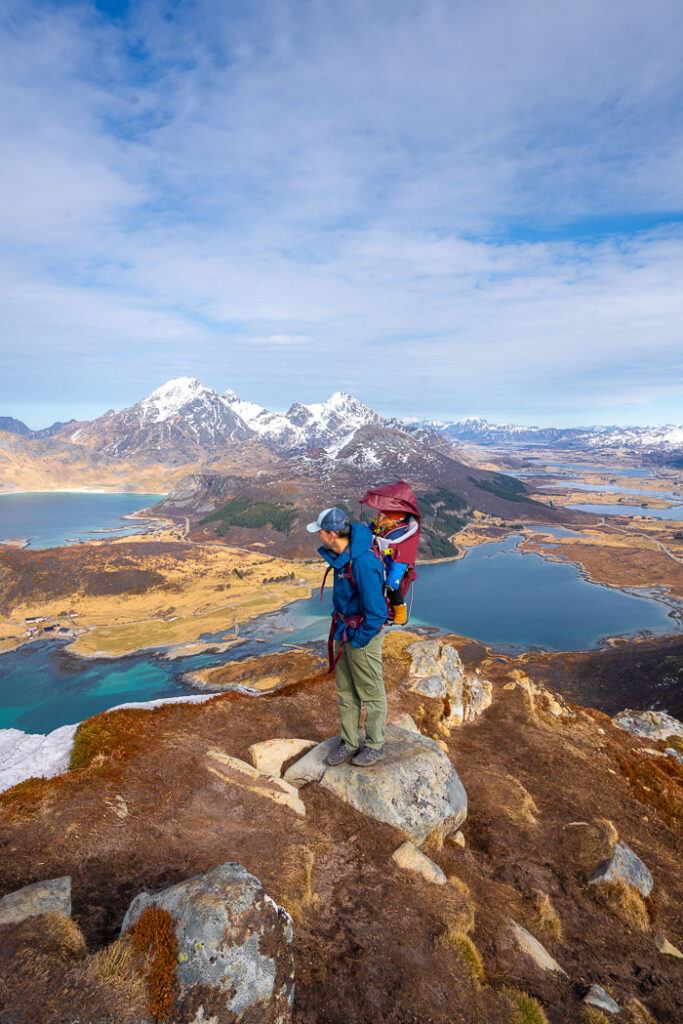
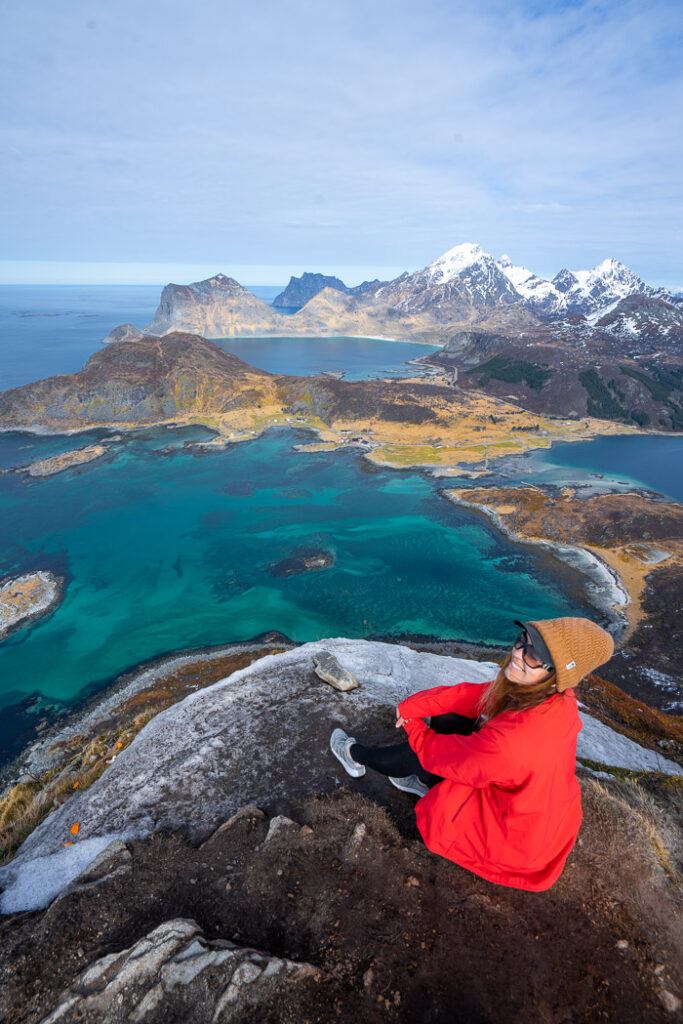
- Eat: We loved Huset Kafe in town.
- Hike: Offersøykammen or if you’re feeling more adventurous, check out Himmeltinden for another gorgeous but tougher trek.
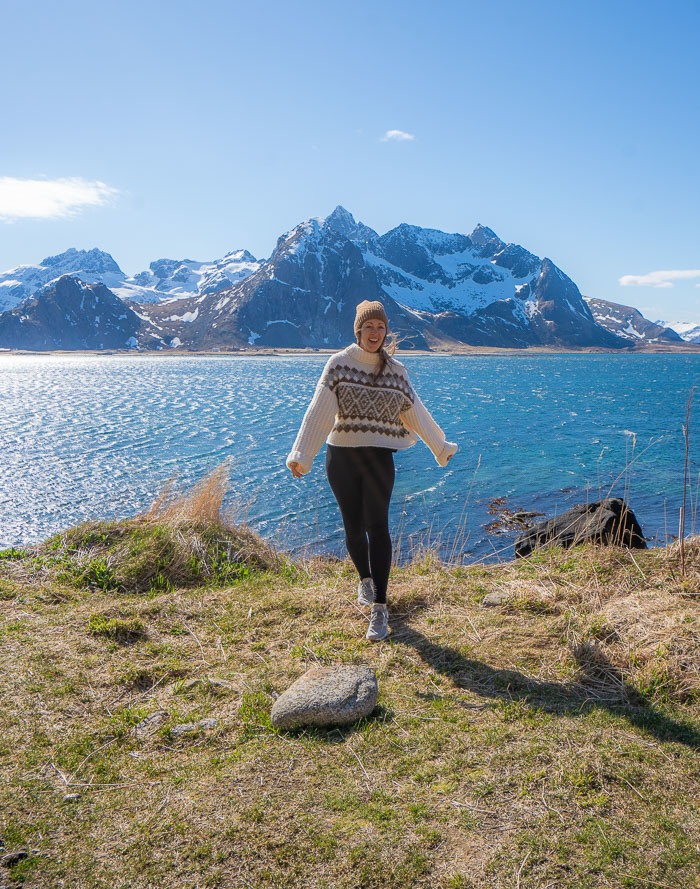
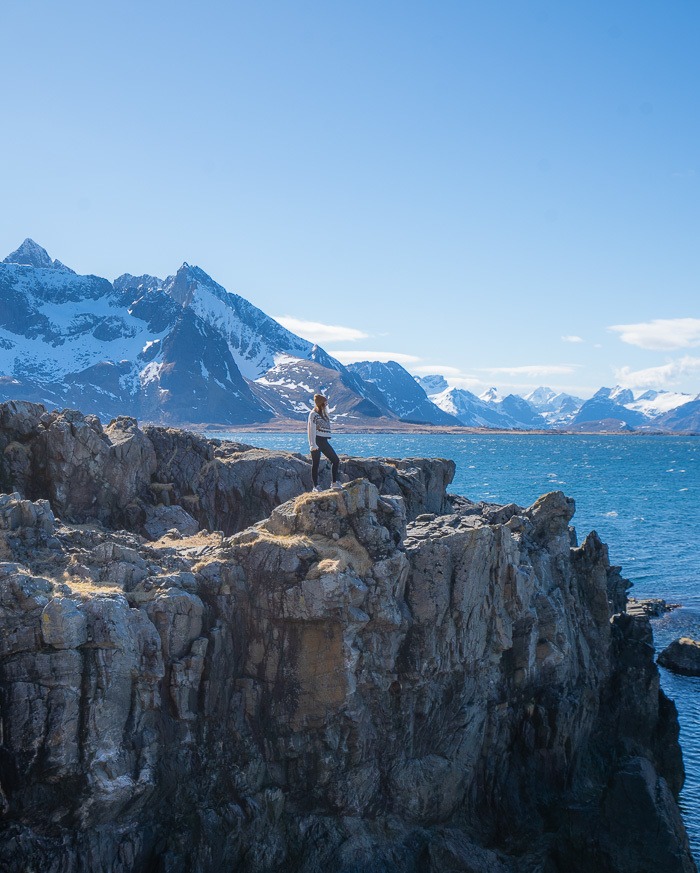
We also drove out to Vikten beach, which was a quaint area with a lovely beach. On a sunny day, that water is BLUE. There’s also an art gallery that sells coffee in town!
Stay
We exclusively stayed in vacation rentals for this trip, whether it was upgraded fisherman’s cabins or vacation homes. It was nice being able to cook, as restaurants are small, and we love having a private hot tub.
Day 3-4: Henningsvær – Can’t Miss Fishing Village
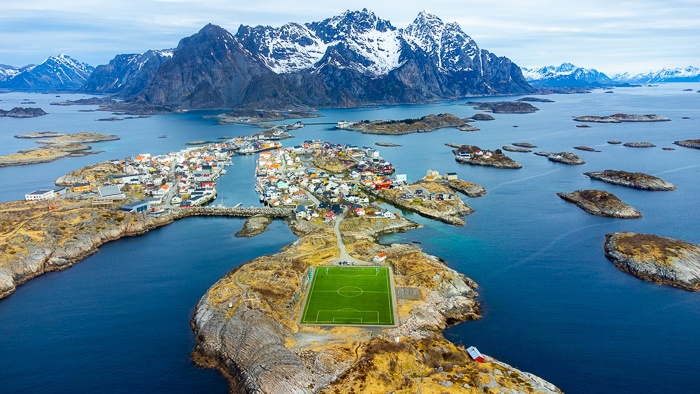
Next up, Henningsvær—possibly one of the most picturesque fishing villages on the planet. You’ll know you’ve arrived when you see the tiny Henningsvær soccer stadium, perched on its own little island. I’m not even a huge soccer fan, but I couldn’t stop snapping photos.
By the way, if you like droning too, much of Lofoten is class G airspace. Here’s a map of areas to avoid.
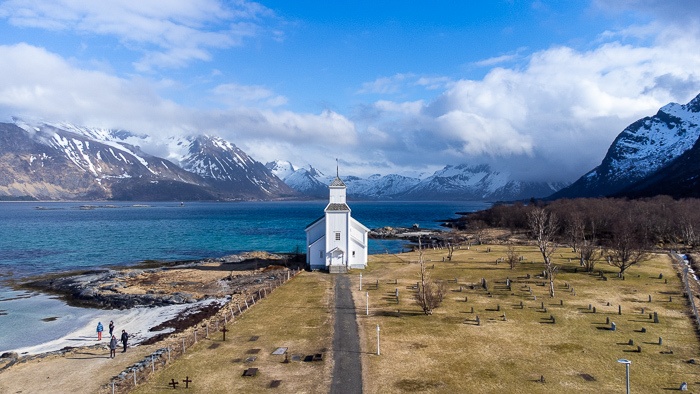

The village itself feels like something out of a dream, with its colorful houses and art galleries. But it’s also a perfect base for some great hikes. Festvågtind is a must—yes, it’s steep, but once you reach the top, you’ll have a view that will make you forget all the sweat. For an easier option, try Djevelporten (The Devil’s Gate), where a precarious rock formation awaits at the end of your journey.
- Eat: For a cozy bite, Fiskekrogen serves some of the best fish soup I’ve ever tasted. Also, try the quirky Klatrekafeen if you want to chat with climbers and locals alike.
- Hike: Festvågtind (advanced) or even partway up is lovely, just steep!

The drive out from there was lovely, and we had such a lovely day, we were pulling over all the time to take pictures.
Fredvang
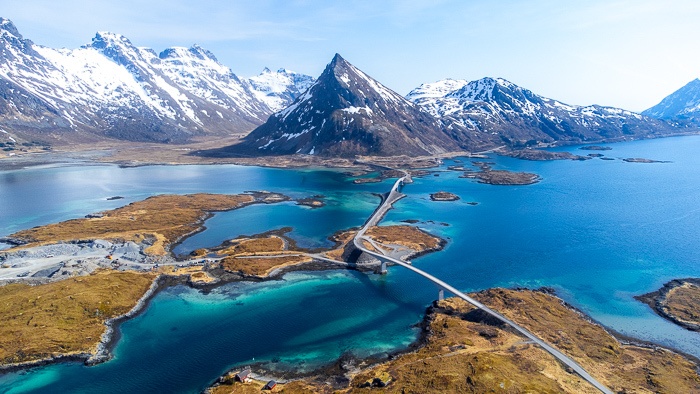
Don’t miss Fredvang, which has some of the more famous beaches in the area. It’s also the gateway to the national park, where some tougher hikes have big rewards of beautiful beaches. We just drove it since we had a toddler with us and they were still snowy, but the area is gorgeous.
Day 5-7: Hamnøy – Iconic Red Fishing Huts
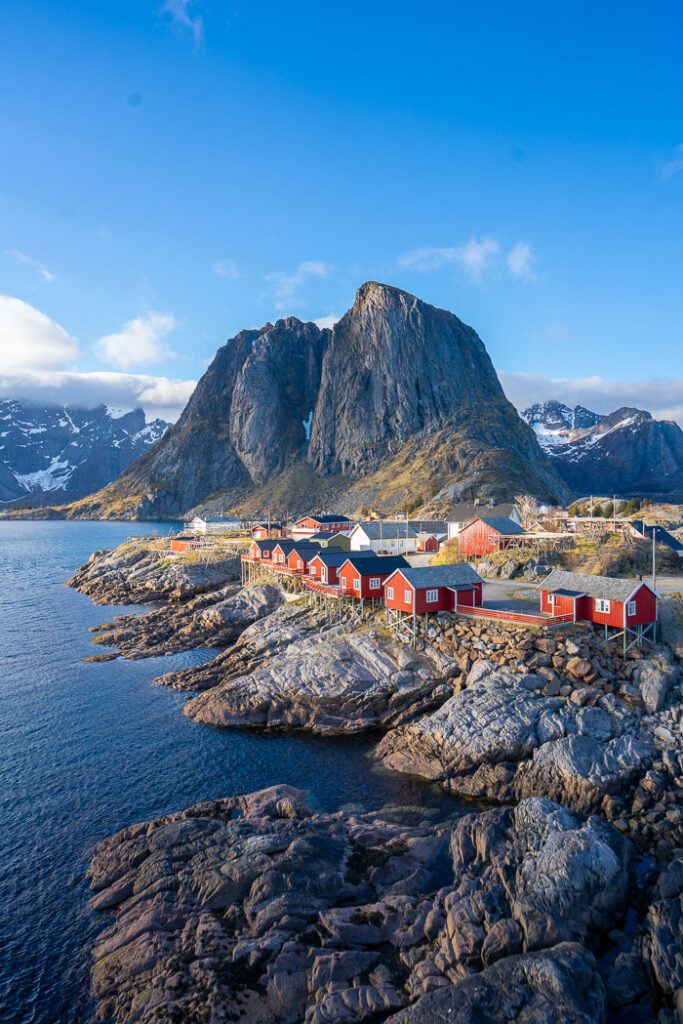
Hamnøy is one of the most iconic spots in Lofoten, and when you see the bright red rorbuer (fishing cabins) against the mountains, you’ll understand why. You’ll feel like you’ve walked into a postcard, except it’s real life. If you’ve ever wanted to stay in one of these cabins, plenty of them are available all over Lofoten has vacation rentals at varying price points.
From Hamnøy, venture to Reine, arguably one of the most beautiful villages in the world, and go for the Reinebringen hike. This hike is not for the faint of heart—it’s steep and will push you to your limit, but once you’re at the summit, the views of the fjords and islands are rumored to be pure magic. It was too snowy when we went, but it should be on your summertime bucket list!
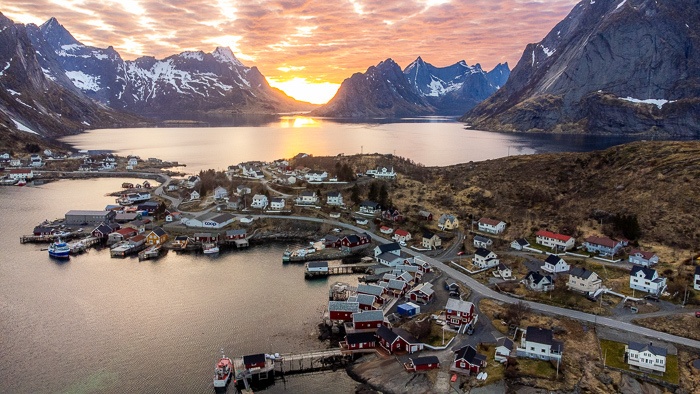
Another incredible stop nearby is Å, the last letter of the Norwegian alphabet and the end of the road. It’s a tiny village with a fascinating fishing history, and it’s perfect for a relaxed afternoon exploring the Norwegian Fishing Village Museum.
- Eat: Gadus is by far the best restaurant in the area. It’s small, so make a reservation!
- Hike: Reinebringen is a must for advanced hikers, but there’s also the more leisurely Munkebu hike if you want something a little less intense.
Day 8: Return to Leknes
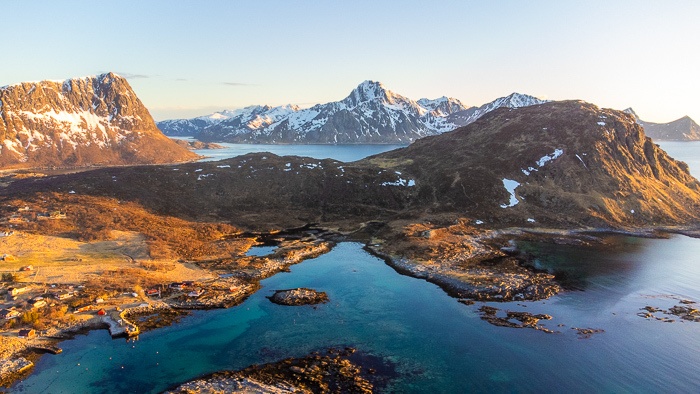
After your week of exploring, hiking, and filling up on fresh fish, it’s time to return to Leknes. But before you head to the airport, make sure you take one last stop at Unstad Beach, known for its Arctic surfing community. If you’re brave (or crazy), you can rent a board and wetsuit and give it a try, or just sit back and watch the surfers take on those chilly waves.
Seasons & What to Expect from the Weather

Lofoten is within the Arctic circle, and much of the year is cold and snowy. We visited in May, which is one of the lowest tourism seasons in Lofoten, which for us, was a great time to visit. You get long days, mild temperatures, the year’s lowest rain/snowfall, and fewer crowds, though you’ll still need layers because Lofoten’s weather is notoriously unpredictable. Some of the hikes may also still be too snowy to do safely.
Summer months (June to August) are prime time for Lofoten. The days bring the midnight sun, intense greenery, and just maybe enough sunshine to jump into that frigid water.
Winter is all about chasing the northern lights and embracing the snow (Iceland is another great spot to chase the Northern lights!)
Perhaps the only time of year that’s not great to visit is October/November, which is one of the rainiest times of year.
I hope this itinerary helps you to have an amazing trip. Expect awe, blisters, and maybe a few tears of joy (and exhaustion). Trust me, it’s all worth it.



